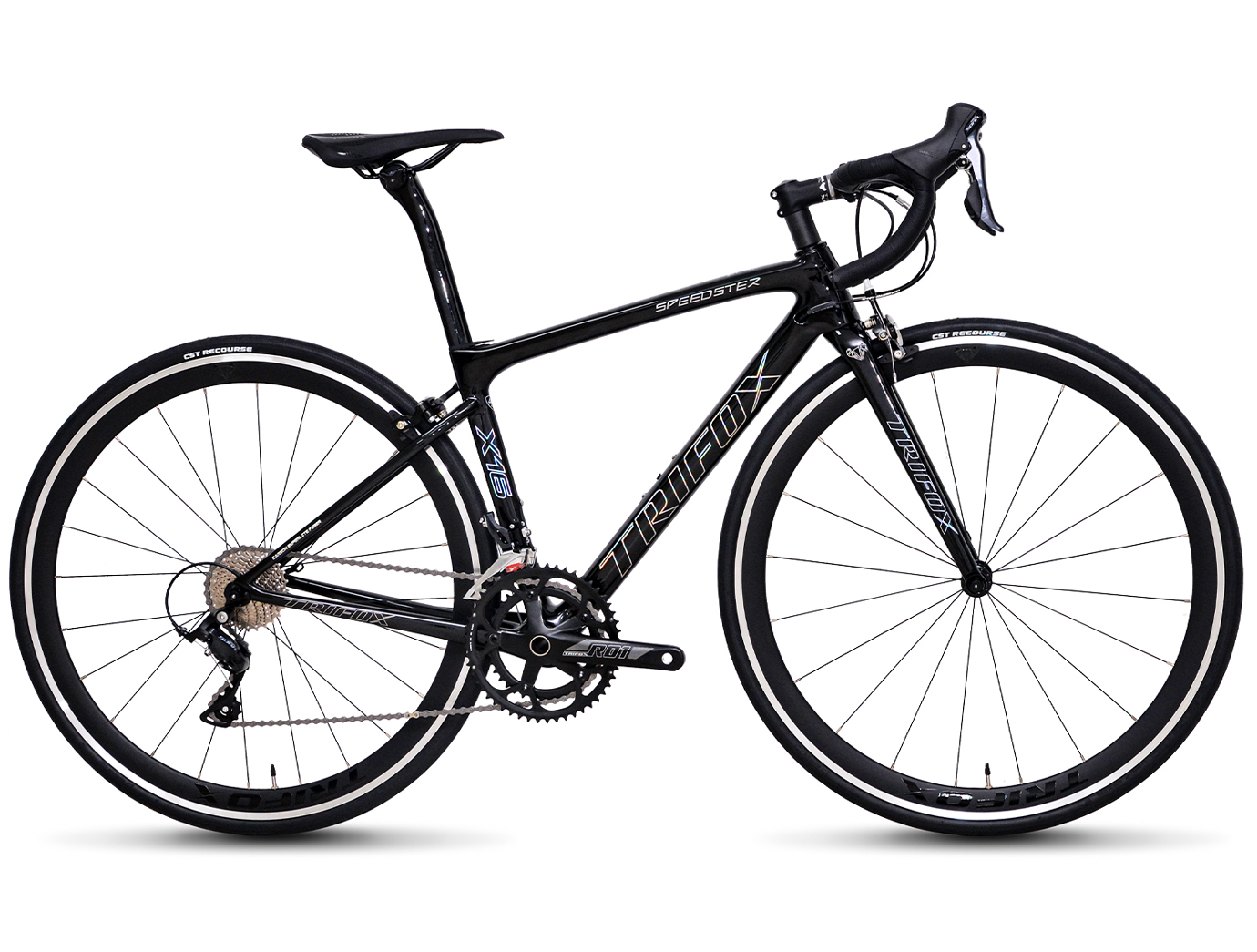
When it comes to cycling, performance is often about the combination of factors like speed, endurance, and efficiency. One of the most noticeable trends among serious cyclists is the pursuit of lighter bikes. An ultra-light road bike has become the ultimate goal for many enthusiasts and competitive riders, promising faster speeds, better climbing ability, and more responsive handling. But can a bike that’s ultra-light really make a tangible difference in your cycling performance? Let’s dive into why a 700C ultralight carbon fiber frame road bike, like the Trifox 700C with Shimano Tiagra R4700 2x10-speed system, can enhance your cycling experience. 1. Improved Speed and Acceleration One of the most significant benefits of an ultra-light road bike is its ability to accelerate faster. The weight of a bike has a direct impact on how much effort is required to get it moving, especially when you’re trying to reach high speeds or make quick sprints. A lightweight bike reduces the mass that the rider needs to propel forward, allowing for quicker accelerations, particularly on flat roads or during the initial takeoff from a stop. The Trifox ultralight carbon fiber frame offers exceptional stiffness-to-weight ratio. This means that less energy is lost in flex, and more of your pedal power is transferred directly into forward motion. Whether you’re racing, sprinting, or just riding for fitness, an ultra-light road bike will help you achieve your goals faster and more efficiently. 2. Better Climbing Performance When climbing steep hills, weight becomes one of the most critical factors in performance. A lighter bike means less mass to carry uphill, reducing the effort needed to maintain a consistent pace during a climb. For serious cyclists, every kilogram saved can have a noticeable impact on climbing times and overall endurance. The Trifox 700C ultralight carbon fiber frame is designed with performance climbing in mind. Thanks to the carbon construction, it’s not just light but also incredibly stiff, allowing for more responsive handling as you shift gears and power through difficult terrain. The carbon material also absorbs road vibrations, ensuring that your body doesn’t wear out prematurely, which is especially useful during longer ascents or on rougher surfaces. 3. Increased Efficiency and Power Transfer A road bike that is ultra-light typically boasts a frame made from materials that are both strong and stiff. Carbon fiber, found in the Trifox 700C, offers a superior strength-to-weight ratio, providing riders with an efficient, responsive ride. When you push on the pedals, the energy you generate is transferred directly into forward motion, rather than being absorbed by the bike’s frame. With a lightweight and stiff frame, the Trifox 700C ensures minimal flex, which means more of your energy is utilized to propel the bike forward. This type of efficient power transfer makes a huge difference, particularly during high-intensity efforts like sprinting or time trials, where maximizing every pedal stroke counts. 4. Responsive Handling and Cornering Another benefit of an ultra-light bike is improved handling, particularly when maneuvering through corners or tight spaces. The Trifox 700C carbon fiber frame provides a sharp and responsive feel, which is ideal for riders who push the limits of their bike’s handling capabilities. When a bike is lighter and more responsive, it requires less effort to change direction or navigate through technical sections, such as curves or obstacles in a race or trail. For cyclists who value control and agility in their rides, an ultra-light bike ensures that your bike responds exactly how you want it to, whether you’re taking sharp corners in a race or riding on winding roads. 5. Enhanced Comfort and Reduced Fatigue A lighter bike doesn’t just offer performance gains—it can also improve comfort, especially on long rides. The Trifox 700C ultralight carbon fiber frame features vibration-damping properties that help absorb road shocks, reducing the strain on your body during extended rides. Less weight in the bike means less strain on the rider, particularly in the arms, legs, and back. Additionally, the frame’s ability to absorb some of the road vibrations helps reduce overall fatigue, allowing cyclists to ride longer distances without feeling as worn out. This is particularly useful for long races or endurance events where conserving energy is crucial. 6. The Cost-to-Performance Ratio While ultra-light bikes like the Trifox 700C with its Shimano Tiagra R4700 2x10-speed system are designed for high performance, they also offer a solid cost-to-performance ratio compared to more expensive models. Carbon fiber frames, while pricier than aluminum, provide top-tier performance without the extreme price tag associated with premium carbon models. For riders who want to boost their cycling performance without emptying their wallets, the Trifox 700C ultralight road bike provides exceptional value for the price. An ultra-light road bike like the Trifox 700C can certainly enhance your cycling performance in several meaningful ways. From better acceleration and climbing performance to improved power transfer, handling, and comfort, the benefits are clear. While weight is not the only factor that determines cycling performance, an ultra-light bike ensures that you can ride faster, longer, and more efficiently. For cyclists who are serious about improving their performance, the Trifox 700C ultralight carbon fiber road bike offers a high-performance solution that delivers on all fronts. Whether you’re racing, training, or simply enjoying the ride, an ultra-light bike can make a noticeable difference in your cycling experience.
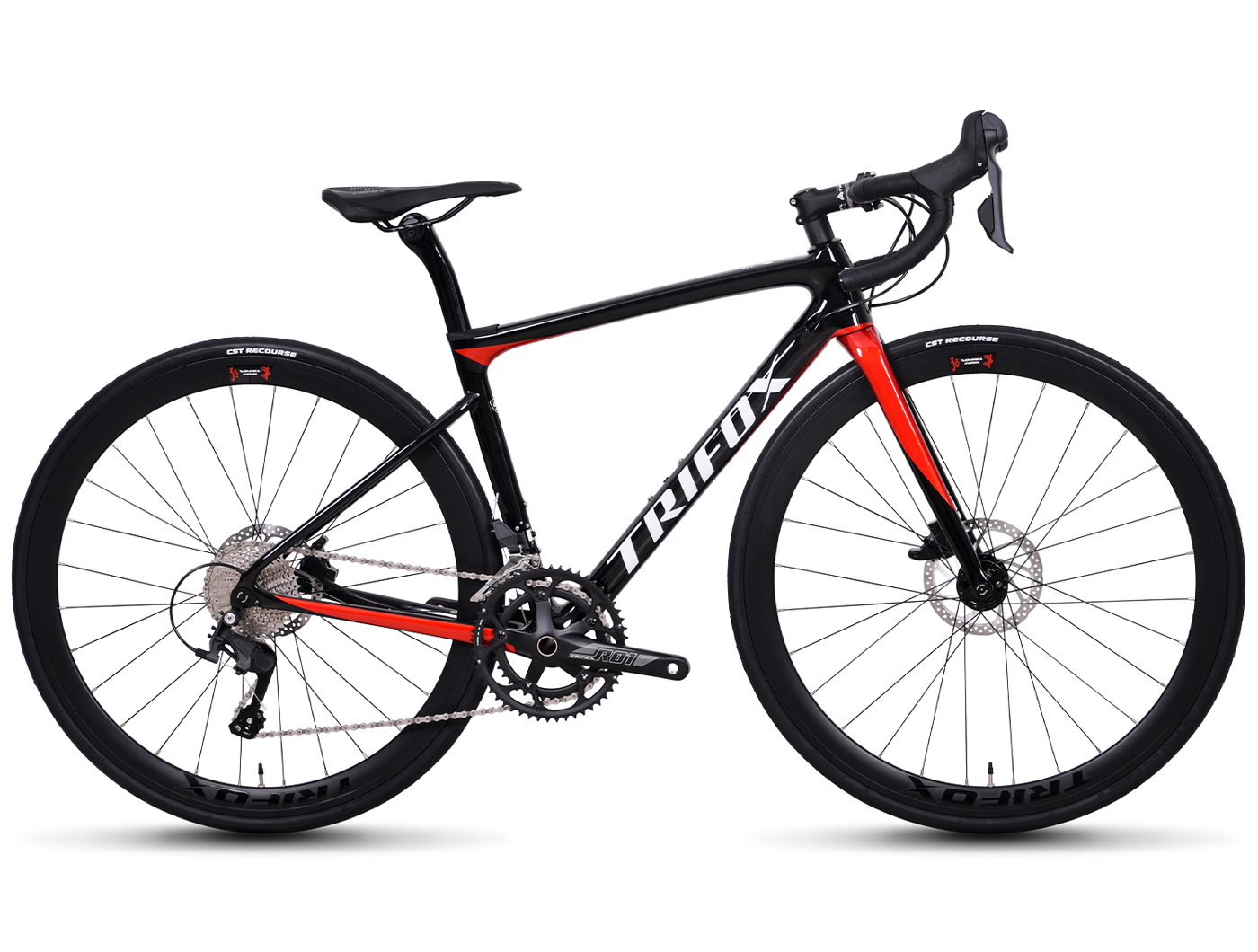
When it comes to competitive cycling, the bike you ride can make all the difference between victory and defeat. For serious racers, selecting the right bike is about more than just brand reputation—it’s about performance, weight, aerodynamics, and durability. The T800 carbon fiber racing bike, like the Trifox 700C Ultralight Carbon Fiber Road Bike, is designed with all these factors in mind, making it the ultimate choice for cyclists who demand nothing less than peak performance. In this blog post, we’ll explore why this bike, with its T800 carbon fiber frame, advanced features, and race-ready design, is a top choice for serious racers. 1. Lightweight Carbon Fiber Frame for Maximum Speed The core advantage of the T800 carbon fiber frame is its impressive lightness without sacrificing strength. Carbon fiber is renowned for being incredibly light yet exceptionally strong and stiff, which translates to faster speeds and more efficient power transfer. In racing, every gram saved is a step closer to achieving your personal best. Compared to traditional aluminum or steel frames, the T800 carbon fiber construction ensures that the bike remains ultra-light while still offering superior stiffness. This stiffness helps maximize pedaling efficiency by ensuring that every watt of energy put into the pedals is transferred directly to the road, rather than being absorbed by the frame. For serious racers, this means faster accelerations, better climbing, and improved overall performance. 2. Aerodynamics for Faster Rides Aerodynamics are crucial for any racing bike, and the T800 carbon fiber racing bike is designed with this in mind. Its aerodynamic frame geometry reduces drag, helping riders maintain higher speeds with less effort. The streamlined design minimizes air resistance, allowing racers to cut through the wind more efficiently, especially during sprints and time trials. The carbon fiber frame allows for smooth, sleek lines that reduce turbulence around the bike, giving you an edge over riders using less aerodynamically optimized machines. Whether you’re on the flat roads of a criterium or speeding down the straights in a time trial, the aerodynamic advantages of the T800 carbon frame can make a noticeable difference in your overall performance. 3. Stiffness and Power Transfer for Optimal Performance The Trifox 700C ultralight carbon fiber road bike is built with precision and stiffness in all the right places. While the frame is designed to be lightweight, it does not compromise on rigidity. In a racing environment, where every second matters, power transfer is critical. The T800 carbon fiber frame ensures that as soon as you push down on the pedals, all of that power goes directly into forward motion, rather than being lost in the flex of the frame. This enhanced stiffness is particularly noticeable during high-intensity efforts, such as climbing steep hills or sprinting to the finish line. When you need the bike to respond quickly and efficiently to your efforts, the T800 carbon fiber frame provides just that. 4. Advanced Disc Brake System for Superior Control Equipped with an S-Ride 2x11-speed groupset and disc brakes, the T800 carbon fiber racing bike delivers superior control and stopping power, even in challenging conditions. Disc brakes offer several advantages over traditional rim brakes, including better performance in wet or muddy conditions, more consistent braking power, and greater control during high-speed descents. For serious racers, the ability to brake confidently without worrying about weather conditions is invaluable. Whether you’re navigating tight corners during a race or descending at high speeds, the disc brake system provides precise control and safety, allowing you to ride with confidence and focus on the race ahead. 5. Durability for Long-Term Racing While lightweight and performance-oriented, the T800 carbon fiber frame is also designed with durability in mind. Carbon fiber, particularly the T800 grade, is known for its ability to withstand the stresses of racing while remaining strong and resilient over time. The frame’s ability to absorb road vibrations helps reduce fatigue during long races, contributing to better comfort and performance over extended periods. Additionally, the Trifox 700C road bike features high-quality components, such as the 2x11-speed groupset, ensuring that the bike remains reliable and smooth for many seasons of racing and training. 6. Cost-to-Performance Ratio While the T800 carbon fiber racing bike may come with a higher price tag than entry-level models, its performance benefits make it an excellent value for serious racers. When you consider the advanced materials, superior aerodynamics, and durable components, the cost-to-performance ratio becomes more than reasonable. For competitive cyclists who want to give themselves every advantage on race day, investing in a top-tier carbon fiber bike like the Trifox 700C ultralight ensures that you’re getting the best possible tool for the job. Conclusion The T800 carbon fiber racing bike is designed to meet the demands of the most serious cyclists, offering unmatched performance, lightweight construction, and superior aerodynamics. Whether you’re racing in a high-stakes event or pushing yourself to improve your personal best, the T800 carbon frame provides the responsiveness, stiffness, and efficiency you need to excel. Combined with cutting-edge features like disc brakes and a precision 2x11-speed groupset, it’s clear why this bike is considered the ultimate choice for serious racers. If you’re looking to take your racing to the next level, the T800 carbon fiber bike will be your trusted companion in every race.
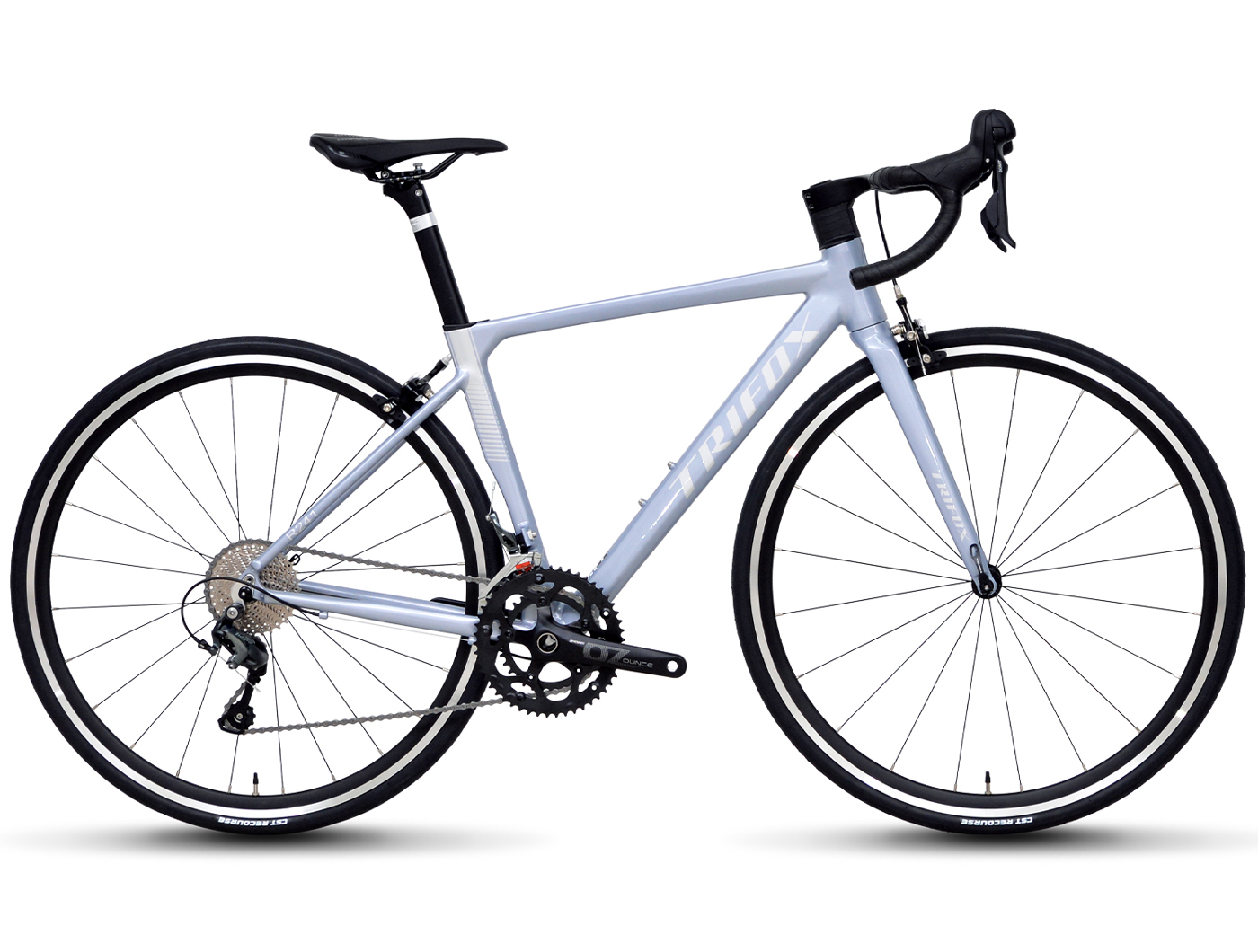
When choosing a road bike, speed enthusiasts and competitive cyclists often consider performance models that offer a balance of speed, efficiency, and comfort. Among these options, the 10-speed aero road bike stands out as a popular choice for those looking to maximize performance without breaking the bank. But how does a 10-speed aero road bike compare to other high-performance models? Let’s take a closer look at its features, advantages, and limitations to help you decide if it’s the right fit for your cycling needs. 1. The Gear Advantage: 10-Speed vs. Other Configurations A 10-speed drivetrain, like the Shimano Tiagra R4700 found on the Trifox 2024 C-Brake Road Bike, offers a solid combination of reliability and performance. While 11- and 12-speed systems provide more gears, the 10-speed configuration strikes a balance that appeals to many riders. The main advantage of a 10-speed setup is its simplicity. With fewer gears, the system is easier to maintain and less prone to wear and tear. This makes it an excellent choice for riders who want performance without the added complexity of higher-speed drivetrains. While it may not have the micro-adjustments of an 11-speed system, a 10-speed drivetrain still provides sufficient range for most terrains, from flat stretches to moderate climbs. 2. Aerodynamics: A Key to Speed The defining feature of any aero road bike is its frame design, optimized to reduce drag and increase speed. The Trifox 2024 model, for instance, features an ultralight aluminum frame, which combines aerodynamic shaping with durability and lightweight performance. Compared to non-aero models, an aero bike allows riders to maintain higher speeds with less effort, particularly on flat and rolling terrains. While other performance bikes may focus on weight reduction for climbing or versatility for all-road conditions, aero road bikes are specifically tailored for speed. This makes them ideal for riders who prioritize fast sprints, time trials, and efficient power transfer on smoother roads. 3. Weight and Materials The Trifox 2024 10-speed road bike utilizes an aluminum frame, which strikes a balance between weight, strength, and affordability. While carbon fiber frames found in higher-end models may be lighter, aluminum remains a competitive choice for cyclists who want durability without significantly increasing the bike’s overall weight. In comparison to heavier steel-framed bikes or more affordable entry-level options, the ultralight aluminum frame ensures that the bike feels agile and responsive, especially during accelerations and climbs. 4. Braking Systems: Caliper vs. Disc This 10-speed aero road bike is equipped with C-brakes (caliper brakes), which offer reliable stopping power on dry roads and are lighter than disc brakes. While disc brakes are increasingly popular on higher-end models for their superior performance in wet conditions, caliper brakes remain a favorite for road cyclists seeking to minimize weight and maintain the classic road bike aesthetic. For performance-focused riders who primarily cycle in dry conditions, the weight savings and streamlined design of C-brakes can be a significant advantage. 5. Cost-to-Performance Ratio One of the standout features of a 10-speed aero road bike is its affordability compared to 11- or 12-speed models. While higher-end bikes may offer marginal gains in gear range and weight reduction, the cost difference is often significant. A 10-speed aero road bike like the Trifox 2024 delivers excellent performance for speed enthusiasts without the premium price tag, making it an attractive option for cyclists who want competitive features on a budget. Conclusion A 10-speed aero road bike strikes an impressive balance between performance, simplicity, and cost-effectiveness. While it may not have the gear range or ultralight materials of higher-end models, its aerodynamic design, lightweight aluminum frame, and reliable Shimano drivetrain make it a strong contender for speed-focused cyclists. Whether you’re looking to improve your average speed, tackle local races, or enjoy high-performance rides, the 10-speed aero road bike offers plenty of value and versatility for a wide range of riders.
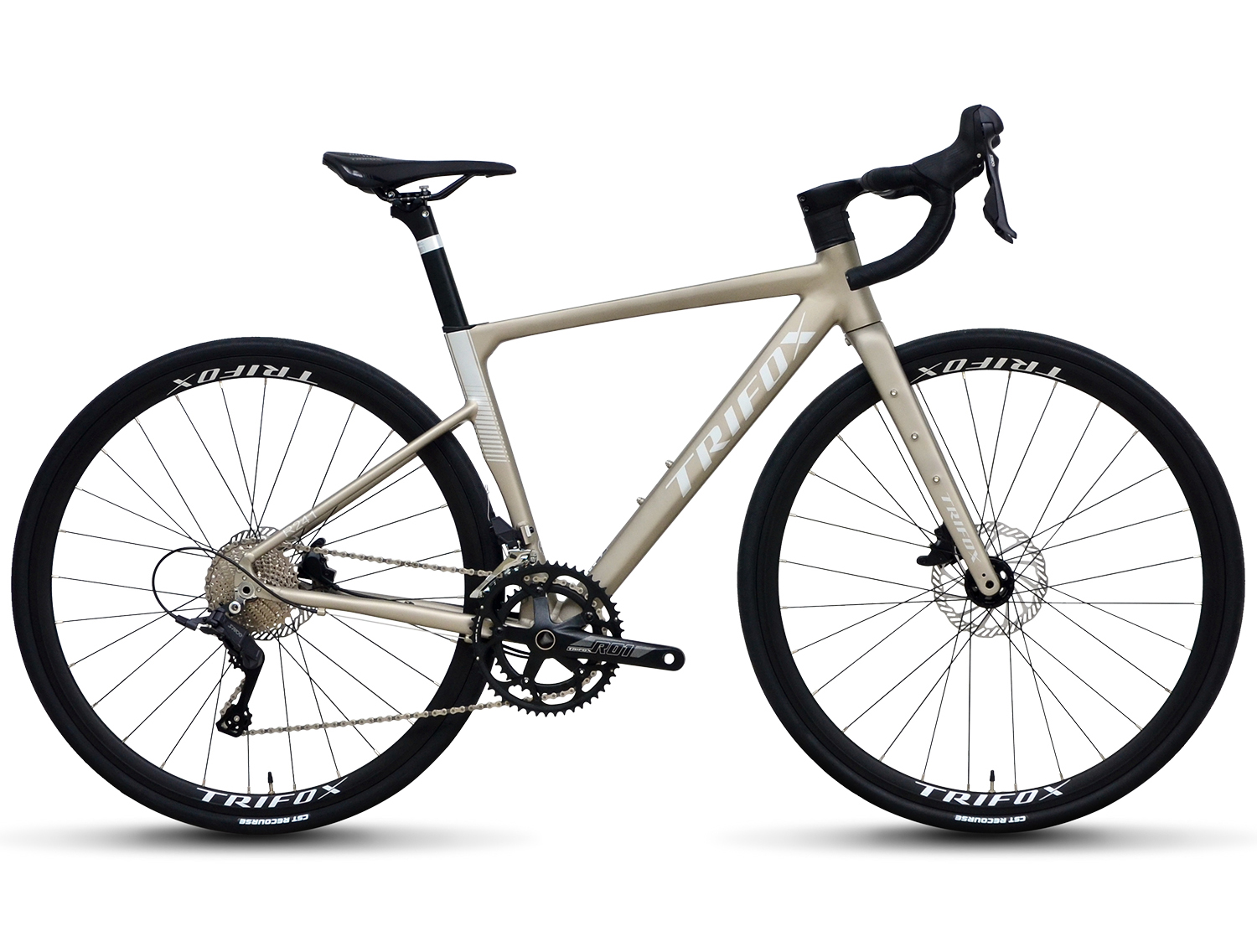
For cycling enthusiasts and competitive riders, the quest for speed is an ongoing challenge. Every part of the bike contributes to the overall performance, from the frame material to the gearing system. Among the most popular choices for speed-focused cyclists is the 11-speed aero road bike. These bikes promise improved aerodynamics, faster shifting, and a more efficient ride, but the question remains: is an 11-speed aero road bike worth the investment for those who are serious about speed? 1. Precision Shifting and Gear Range One of the most significant upgrades you get with an 11-speed system is the increased gear range and smoother, faster shifting. Compared to a 10-speed bike, an 11-speed drivetrain allows for more closely spaced gears. This means you can make finer adjustments in your cadence, ensuring that you always find the perfect gear to optimize your pedaling efficiency—whether you're powering through flat stretches or tackling a challenging climb. The added gears also give you a broader range, helping to maintain speed on varying terrains. For speed enthusiasts, having the ability to fine-tune your gear selection in response to changes in gradient or wind conditions is a huge advantage. In races or time trials where every second counts, this level of precision can make the difference between a podium finish and an also-ran result. 2. Aerodynamics and Speed An aero road bike is designed with one goal in mind: speed. The frame geometry is optimized to reduce drag, and the bike’s overall design helps the rider achieve a more aerodynamic position. Combined with the 11-speed drivetrain, which allows for more efficient power transfer, an aero road bike helps cyclists maintain higher speeds with less energy. The Trifox 2024 R241, for example, features a carbon fork and aluminum frame, a combination that delivers both aerodynamics and durability without sacrificing weight. The lighter frame, combined with the aerodynamic design, reduces wind resistance, allowing cyclists to achieve faster speeds with less effort. For speed enthusiasts, this means that you can ride faster, use less energy, and maintain high speeds over longer distances. 3. Better Control with Disc Brakes In addition to the performance benefits of the 11-speed system, modern aero road bikes like the Trifox R241 come equipped with disc brakes. Disc brakes provide superior stopping power, especially in wet or variable conditions, allowing for better control at high speeds. For speed enthusiasts, having the confidence to brake effectively—without compromising safety or control—is crucial when navigating downhill stretches or tight corners during competitive events. When you're pushing your bike to its limits, knowing that your braking system can handle the demands of high-speed riding offers peace of mind, ensuring you can focus on performance without worrying about safety concerns. 4. Enhanced Durability and Performance Over Long Distances While the initial investment in an 11-speed aero road bike may seem steep, these bikes are built for durability. The quality of materials, such as the aluminum frame and carbon fork found in the Trifox R241, is designed to withstand the demands of long-distance rides, high-speed sprints, and tough training sessions. Aero bikes are engineered for riders who are pushing their limits, and these frames can handle the stress of aggressive riding. Moreover, the S-Ride 2x11-speed groupset offers smooth, responsive performance over time, even as it experiences wear and tear. The added durability ensures that you're not just buying a bike for today but investing in a machine that will serve you well through many seasons of racing and training. 5. The Cost-to-Performance Ratio One of the key considerations when purchasing any high-performance bike is the cost-to-performance ratio. While an 11-speed aero road bike like the Trifox R241 may come at a premium price compared to entry-level models, the performance gains in terms of speed, efficiency, and aerodynamics make it a worthwhile investment for serious cyclists. If speed is your top priority, the precision and control offered by an 11-speed system can significantly enhance your overall riding experience. For speed enthusiasts, the ability to gain an edge in both training and competition can justify the investment. When you factor in the long-term durability and the advanced features like disc brakes and aerodynamic frame design, an 11-speed aero road bike offers both performance and value. Conclusion If you’re a speed enthusiast looking to elevate your riding experience, the 11-speed aero road bike is definitely worth the investment. With benefits like precision shifting, superior aerodynamics, better braking performance, and long-term durability, this bike type is built to optimize every ride. Whether you’re a competitive cyclist or a recreational rider aiming for higher speeds, a well-designed aero road bike like the Trifox R241 can help you achieve your goals while providing a thrilling and efficient ride.
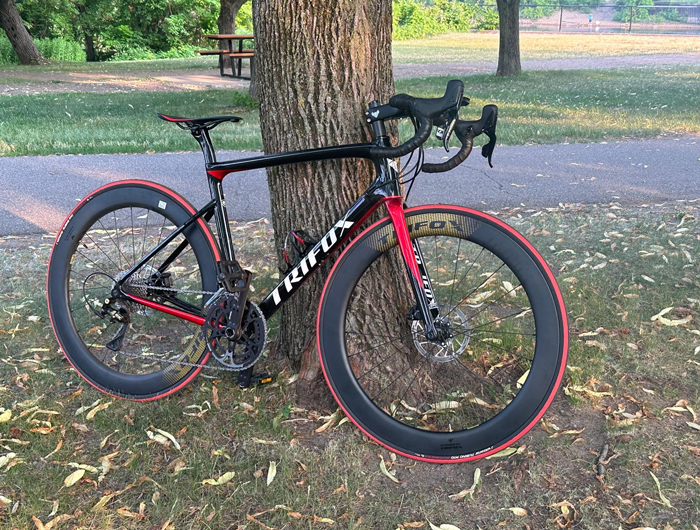
When it comes to competitive cycling, every second counts, and every gram saved can make a noticeable difference in performance. This is why the lightest road bike often becomes the top choice for elite athletes. But what exactly makes these feather-light bicycles so popular among competitive cyclists? 1. Speed and Efficiency One of the most significant advantages of a lightweight road bike is the enhanced speed and efficiency it offers. In competitive cycling, particularly in races involving steep climbs or time trials, the ability to accelerate quickly and maintain momentum is essential. Lighter bikes require less effort to propel forward, especially uphill. This means that cyclists can conserve energy during long rides and still maintain high speeds. While aero frames and gearing systems certainly play their roles, a light bike can be the difference between winning and losing when every fraction of a second counts. A lighter frame reduces the overall weight the cyclist needs to carry, making it easier to achieve faster lap times and quicker accelerations, especially when combined with an optimal riding position. 2. Improved Handling Handling is another critical factor in competitive cycling. Lighter bikes offer more responsive handling, especially during sharp turns or when navigating through technical courses. When the bike’s frame is lighter, it requires less force to move it in the desired direction, leading to quicker adjustments and greater precision. This responsiveness can be particularly valuable in races that include tight corners or winding paths where every maneuver counts. Additionally, lighter bikes often have better overall balance, making it easier to maintain control in various riding conditions, from fast descents to technical ascents. 3. Climbing Performance Climbing is one area where the weight of the bike can make the most noticeable difference. Competitive cyclists, particularly those in events like the Tour de France or the Giro d'Italia, often face long, grueling ascents. The lighter the bike, the less weight the rider needs to push uphill, which can translate into better climbing performance. A road bike that is designed with weight-saving materials, such as carbon fiber or high-end aluminum, allows a cyclist to exert less energy during climbs, giving them a competitive edge over riders with heavier bikes. This advantage becomes even more pronounced during sustained climbs, where maintaining speed while managing energy is crucial. 4. Comfort and Fatigue Reduction While speed and efficiency are essential, the lighter weight of a road bike can also contribute to improved comfort over long distances. Lighter bikes often use materials that are not only strong but also engineered to absorb road vibrations and shocks better than heavier counterparts. This means less fatigue over time, even on rougher terrains. Reducing fatigue is vital for maintaining high performance throughout a race, especially in multi-stage events. With less energy wasted on dealing with discomfort, cyclists can focus on pacing themselves and conserving their strength for critical moments. 5. Technological Advancements in Materials Today’s lightest road bikes are built using advanced materials that provide strength without the added weight. Carbon fiber, for example, is incredibly light yet extremely durable, offering the perfect balance of stiffness and flexibility. Many premium road bikes incorporate these materials in their frame, fork, and wheels, making them more aerodynamic while minimizing weight. Bike manufacturers, such as **Trifox**, are pushing the limits of design, creating bikes that combine cutting-edge materials with performance-oriented geometry. The result is a new generation of road bikes that are not only lighter but also stronger and more responsive than ever before. Conclusion The lightest road bike isn’t just about shedding grams for the sake of weight—it’s about optimizing performance. Lighter bikes enhance speed, improve handling, and boost climbing capabilities, making them an essential choice for competitive cyclists. As technology advances and materials improve, these bikes are only becoming more specialized, allowing cyclists to achieve peak performance in every race. For any competitive cyclist looking to gain an edge, investing in a lightweight road bike is not just a choice, but a strategic move toward success.
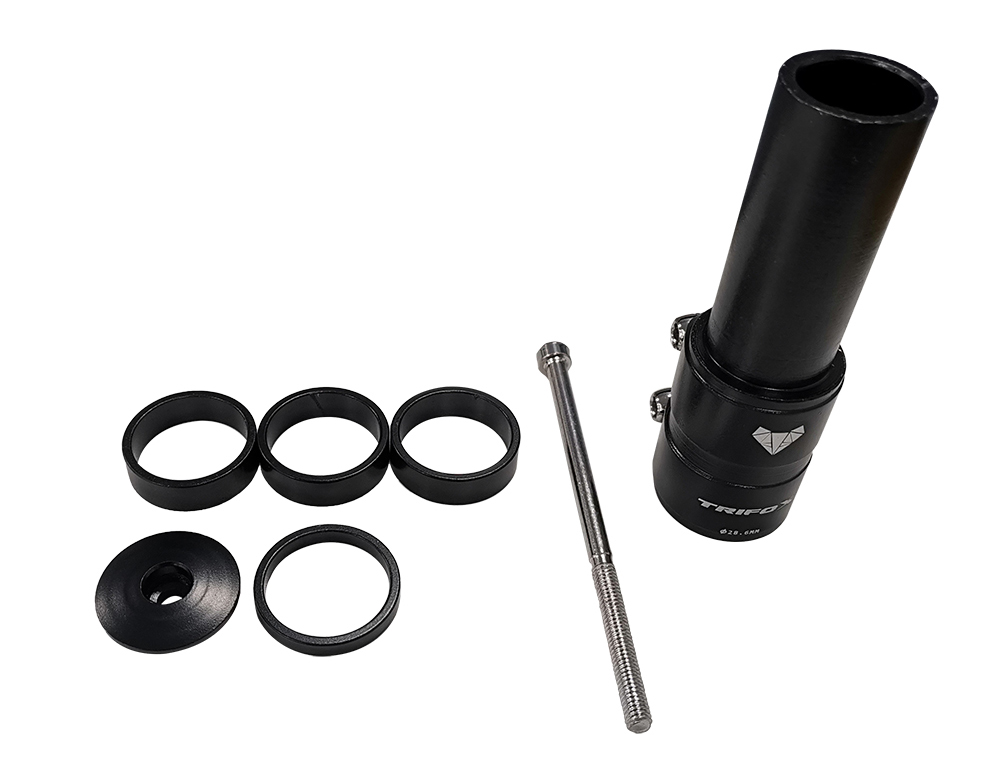
Bike spacers may seem like small, insignificant components, but they play a crucial role in optimizing your cycling setup. These simple rings, typically made of aluminum or carbon, are installed on the headset of your bike, between the stem and the frame’s steering tube. Though often overlooked, spacers can significantly affect your comfort, performance, and overall riding experience. 1. Adjusting Handlebar Height One of the main purposes of bike spacers is to adjust the height of your handlebars. By adding or removing spacers, you can fine-tune the positioning of your handlebars to achieve the most comfortable riding posture. Raising the handlebars using spacers promotes a more upright riding position, which is ideal for comfort on long rides or for cyclists with back or neck issues. Conversely, lowering the handlebars can put you in a more aggressive, aerodynamic position, perfect for racing or when looking to reduce wind resistance. 2. Personalizing Fit Every rider is different, and getting the right fit is crucial for performance and comfort. Spacers offer an easy and cost-effective way to make subtle adjustments to the fit of your bike without needing to purchase a new stem. This flexibility is particularly useful during bike fitting sessions, where small adjustments can have a big impact on your riding experience. Spacers allow you to find a setup that feels just right, whether you're a recreational rider or a competitive cyclist. 3. Ensuring Frame and Stem Compatibility Spacers can also help ensure that your stem and frame are compatible in terms of stack height. For bikes with frames that have a shorter head tube, spacers can make up the difference and allow for a more ergonomic fit. This also ensures that your stem can be properly mounted and that the handlebars are in the right position for optimal control. 4. Improving Handling and Control By adjusting the height of your handlebars with spacers, you can enhance bike handling and control. A higher handlebar position can improve your leverage and make it easier to steer, particularly on technical terrain or in city commuting situations. A lower handlebar position, on the other hand, can improve stability and responsiveness at high speeds, offering better handling during descents or cornering. While small in size, bike spacers are an essential component in creating a customized and comfortable ride. Whether you’re adjusting handlebar height, personalizing fit, or improving bike handling, spacers give you the flexibility to fine-tune your setup for maximum performance. When paired with the right stem parts, they ensure that your bike is perfectly tailored to your unique riding style and needs. Explore Trifox’s collection of stem parts and accessories to enhance your cycling experience today!
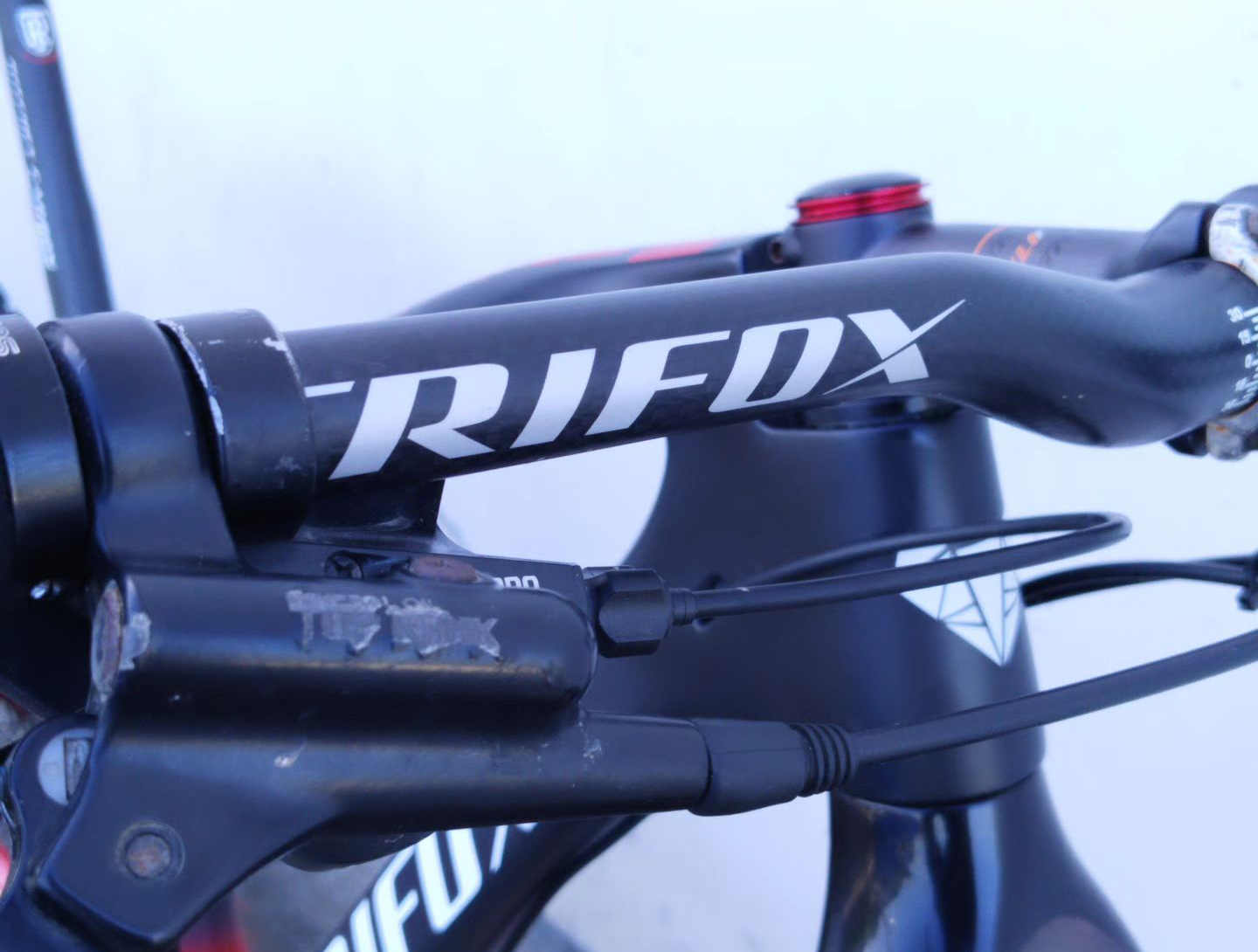
When it comes to optimizing your cycling experience, the right handlebars play a critical role in enhancing both performance and comfort. The design and shape of handlebars affect your posture, control, and overall efficiency, which is why selecting the right type for your riding style is key. Whether you're a commuter, an avid mountain biker, or a road racing enthusiast, understanding the advantages of different bike handlebar types can make a world of difference. 1. Drop Bars: Aerodynamics & Versatility Drop bars are the quintessential choice for road bikes, providing an aerodynamic position that allows you to cut through the wind with ease. These handlebars curve downward and forward, allowing the rider to lower their body to reduce air resistance—a critical advantage for competitive cyclists or those who ride long distances at higher speeds. The multiple hand positions offered by drop bars also help reduce fatigue during extended rides, as riders can shift their grip to relieve pressure on different parts of their hands, wrists, and forearms. The ability to ride in a tucked position on the drops, or to sit more upright on the tops, gives riders flexibility for varied riding conditions. Whether you're sprinting on flat roads or tackling a long climb, drop bars provide the comfort and control you need. Best For: Road cyclists, triathletes, long-distance riders, and competitive racers. 2. Flat Bars: Control & Comfort Flat bars are the go-to option for mountain bikes, hybrid bikes, and commuter bikes. Offering a more upright riding position, flat bars improve visibility, making them ideal for urban environments where maneuverability and quick reactions are essential. The straight, level design gives riders more direct control over the bike, which is particularly beneficial for off-road riding where stability is critical. On the road, flat bars help reduce strain on the back, neck, and wrists by encouraging a more natural posture, particularly for cyclists who may not need to adopt an aggressive, aerodynamic position. For beginners or casual riders, flat bars offer comfort and ease, while still delivering the stability needed for more challenging trails. Best For: Mountain bikers, commuters, casual cyclists, and beginners. 3. Riser Bars: Comfort & Better Handling Riser bars are essentially an elevated version of flat bars, with a slight upward bend. This design raises the handlebars, putting the rider in a more relaxed, upright position. This helps reduce pressure on the back and wrists, which is ideal for cyclists who want more comfort on longer rides, particularly on rougher terrain. In addition to comfort, riser bars offer improved handling, especially when navigating technical trails. The extra height allows for better control and leverage when steering, making riser bars a popular choice for trail and mountain bikers who encounter varied terrain, obstacles, and steep descents. Riser bars also provide more space for installing accessories such as lights, bell, or even a bike computer, making them versatile for both casual and serious riders. Best For: Mountain bikers, trail riders, and cyclists who prioritize comfort and control. 4. Bullhorn Bars: Speed & Comfort Hybrid Bullhorn bars blend the aerodynamic benefits of drop bars with the stability and comfort of flat bars. These handlebars curve forward and upward, resembling the shape of a bull’s horns, hence the name. This design gives cyclists the option to adopt a more aggressive position for speed but with additional hand positions for a more relaxed ride. Bullhorn bars are popular in time trial racing and triathlons, where a more streamlined position is advantageous. They are also great for fixed-gear riders or commuters who want an efficient and comfortable setup. The forward curve of bullhorn bars helps reduce wind resistance while maintaining a comfortable grip, making them ideal for long-distance cyclists who want to combine speed with comfort. Best For: Time trialists, triathletes, commuters, and riders looking for a hybrid bar for speed and comfort. 5. Aero Bars: Maximum Aerodynamics for Racing Aero bars are designed to maximize speed by allowing riders to adopt a low, flat position that minimizes wind resistance. Typically used by triathletes and time trial cyclists, aero bars offer a sleek, tucked position that significantly reduces drag, enabling cyclists to ride faster with less effort. They are mounted on top of drop bars and give the rider a place to rest their forearms while holding onto extensions that curve forward. While aero bars are primarily about performance, they can take a toll on long-term comfort. This makes them less suitable for recreational cyclists or those who prefer more relaxed rides. However, for competitive cyclists aiming to optimize their aerodynamics, aero bars are a crucial tool. Best For: Triathletes, time trial riders, and competitive racers looking to maximize speed. 6. Butterfly Bars: Comfort for Touring For long-distance touring cyclists, butterfly bars (also known as trekking bars) are an excellent choice. These bars have a wide, flared design that provides multiple hand positions, ensuring comfort during extended rides. The shape allows riders to switch between a low, aero position and a more relaxed upright posture, which is crucial for maintaining comfort over long distances and varied terrains. The wide grip and versatility of butterfly bars make them ideal for touring bikes, offering a combination of control and comfort for cyclists tackling long multi-day rides. Best For: Touring cyclists and long-distance riders looking for comfort and versatility. Conclusion: Choose the Right Handlebar for Your Riding Style Choosing the right bike handlebar can significantly improve your riding experience, whether you're seeking speed, comfort, or control. From the aerodynamic drop bars of road bikes to the rugged stability of riser bars for mountain biking, there's a handlebar style suited to every cyclist’s needs. Understanding the specific advantages of each type can help you select the one that best complements your riding style, ensuring a smoother, more enjoyable ride. At Trifox, we offer high-performance carbon bike handlebars that cater to a variety of cycling styles, allowing you to optimize your bike setup for maximum comfort and efficiency. Explore our collection today and find the perfect handlebars for your cycling needs.

Whether you’re a competitive cyclist, a recreational rider, or someone aiming to improve fitness, setting goals is crucial for progress. Goals give purpose and direction to your cycling journey, helping you stay motivated, track progress, and push your limits. But it’s not enough to simply say, “I want to get better at cycling.” Achieving goals requires strategy, dedication, and a clear plan. So, what are the best strategies for setting and achieving your cycling goals? 1. Define Clear, Measurable Goals The first step in any goal-setting process is to define clear, measurable objectives. Without clear goals, it's easy to lose sight of what you want to achieve. Instead of saying, “I want to ride more,” set specific targets, such as: -Ride a certain number of miles per week: “I will ride 100 miles per week.” -Achieve a specific speed or time: “I will improve my 10-mile time by 10%.” -Participate in a cycling event: “I will complete a 100-mile race by the end of the season.” Measurable goals make it easier to track your progress and stay motivated, as you can see the tangible improvements over time. 2. Break Goals into Smaller Milestones Once you have your big goal, break it down into smaller, more manageable milestones. These milestones act as checkpoints on your journey and give you a sense of achievement as you progress. For instance, if your ultimate goal is to complete a century ride (100 miles), break it down into milestones like: -Week 1: Ride 30 miles -Week 3: Ride 50 miles -Week 6: Ride 75 miles -Week 9: Complete 100 miles Smaller, incremental goals help you stay focused without becoming overwhelmed by the larger target. They also provide an opportunity for frequent celebrations and reinforce the habit of progress. 3. Focus on Consistency Over Intensity Consistency is key to progress in cycling. While it’s tempting to push yourself hard during a single workout, long-term success comes from steady, consistent effort. Try to establish a regular cycling schedule that fits your lifestyle and gradually increases in intensity over time. For example, if you’re aiming to build endurance, focus on steadily increasing your weekly mileage. If you’re working on speed, try to gradually improve your time on a set route or track. Remember, consistency doesn’t mean pushing yourself to exhaustion every ride. It means making cycling a regular habit, which will pay off over time. 4. Track Your Progress with Technology One of the advantages of cycling in the modern age is the plethora of technology available to help track your progress. Bike computers, GPS devices, fitness apps, and heart rate monitors can provide valuable data on your performance. Track metrics like speed, distance, heart rate, cadence, and elevation gain to see where you are improving and where you need to focus. For example, tools like Strava and Garmin can track your rides and let you compare performance over time. This data-driven approach helps you stay focused and adjust your training plan as necessary. 5. Create a Training Plan A structured training plan tailored to your cycling goals is essential for making measurable progress. Whether you’re training for a race or simply aiming to improve your fitness, a well-balanced training plan should include: -Endurance rides: Longer, steady rides to build stamina. -Interval training: Short, intense bursts of effort followed by rest periods to improve speed and power. -Strength training: Exercises off the bike (like leg and core workouts) to improve cycling performance and prevent injury. -Rest and recovery: Incorporating rest days is crucial to allow muscles to repair and grow stronger. A structured training plan ensures that you’re working on different aspects of your cycling abilities and prevents burnout. 6. Stay Flexible and Adapt Your Plan Life can sometimes interfere with your best-laid plans, whether it’s weather conditions, illness, or other commitments. It’s important to stay flexible and adapt your goals and training plans when necessary. Missing a few rides or having to adjust your target date isn’t a failure—it’s an opportunity to learn and adjust. For example, if weather conditions cause you to miss an outdoor ride, consider doing an indoor trainer session or an alternate form of exercise to maintain fitness. 7. Celebrate Milestones and Stay Positive Cycling goals can take time to achieve, but celebrating small victories along the way can help you stay motivated. Whether it’s completing a challenging ride, hitting a personal best, or simply sticking to your training schedule, recognize your progress. Positive reinforcement is key to maintaining enthusiasm, especially during tough times. Additionally, maintain a positive mindset and focus on your progress rather than setbacks. Cycling can be challenging, but with persistence and the right strategies, you can overcome obstacles and reach your goals. Conclusion Setting and achieving cycling goals requires more than just motivation—it requires a clear strategy. By setting specific, measurable goals, breaking them into manageable milestones, staying consistent, and tracking progress, you’ll be well on your way to becoming a better cyclist. Remember to stay flexible, celebrate your achievements, and keep a positive mindset. With patience and persistence, you’ll see significant progress and achieve your cycling goals. For more tips and cycling gear recommendations to support your journey, visit Trifox Bike. Happy riding!
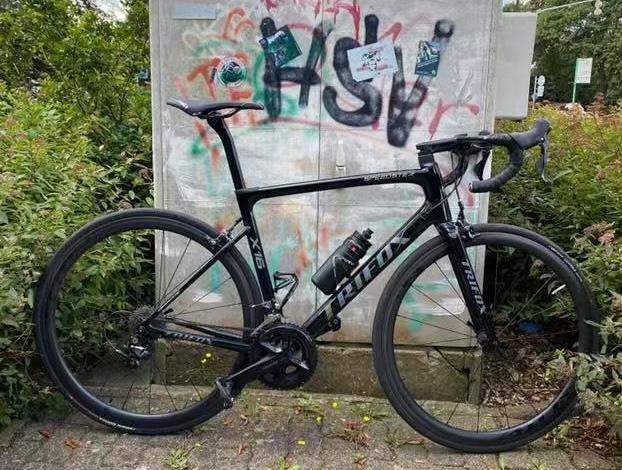
For cyclists, achieving optimal speed and efficiency is often the ultimate goal. Whether you're a competitive racer or an avid long-distance rider, every detail of your bike can contribute to your performance. Among these details, the aero bike frame stands out as a critical component in enhancing cycling efficiency. With advancements in design and materials, such as the Trifox carbon road bike frames, cyclists can now experience remarkable improvements in speed and reduced drag, transforming their riding experience. An aero bike frame is specifically designed to minimize air resistance, which is one of the primary forces working against a cyclist. By reducing drag, these frames allow cyclists to maintain higher speeds with less effort, directly translating to improved performance, especially over long distances and in competitive settings. The aerodynamic shape of the frame, with its sleek lines and strategically positioned tubes, cuts through the air more efficiently than traditional frames. The Trifox carbon road bike frames epitomize this aerodynamic advantage. Constructed using high-quality carbon fiber, they offer both strength and lightness, which are essential for speed and agility. Carbon fiber is recognized for its superior strength-to-weight ratio, allowing frames to remain robust while being significantly lighter than their aluminum or steel counterparts. This reduction in weight means cyclists can accelerate faster, maintain momentum with less fatigue, and climb hills more effortlessly. Moreover, the frame geometry plays a vital role in cycling efficiency. The angles and dimensions of an aero frame are meticulously crafted to optimize the rider's position, aligning the body in a way that reduces frontal air exposure. For instance, the Trifox frames are designed to promote an aggressive riding posture that is aerodynamic yet comfortable for long rides. This geometry not only aids in reducing drag but also enhances the rider's power transfer, ensuring that every pedal stroke is efficiently converted into forward motion. The incorporation of advanced materials and precise frame geometry in aero bike frames also contributes significantly to stability and handling. At high speeds, maintaining control is crucial, and the stiffness provided by carbon fiber ensures that the bike responds promptly and predictably to the rider's input. Whether navigating sharp corners in a race or enduring long straight stretches on a time trial, an aero frame offers the confidence and control needed to maximize performance. In competitive cycling, where every second counts, the benefits of an aero frame become even more pronounced. Reduced drag means that cyclists can save precious energy, which can be the difference between winning and losing in a tightly contested race. For long-distance riders, the energy savings afforded by an aero frame translate to less fatigue and greater endurance, allowing them to complete rides faster and with less physical toll. Ultimately, the integration of an aero bike frame can significantly enhance a cyclist's efficiency by optimizing speed, reducing drag, and improving overall performance. The Trifox carbon road bike frames exemplify these benefits through their innovative design and state-of-the-art construction. Whether you're aiming for a personal best in a race or seeking a more enjoyable and efficient ride over long distances, an aero bike frame can be the key to unlocking your full cycling potential.

















